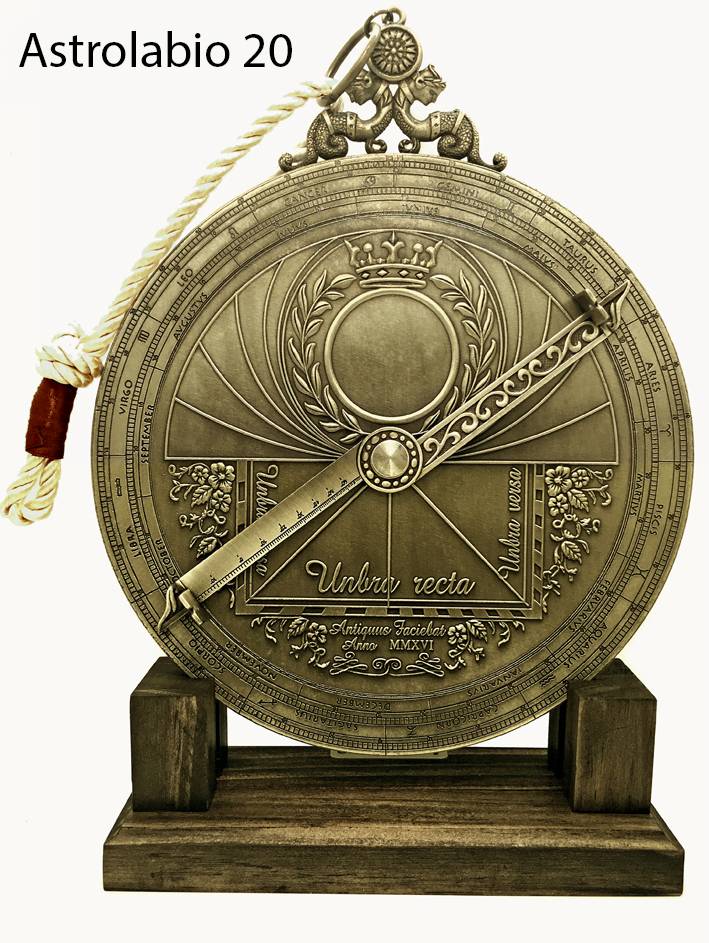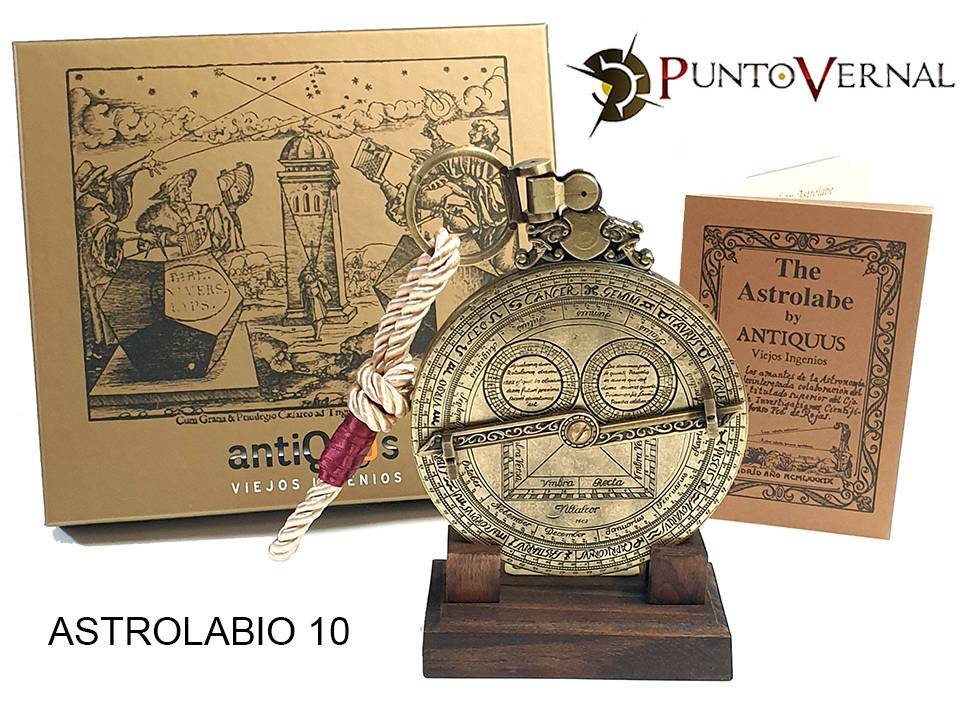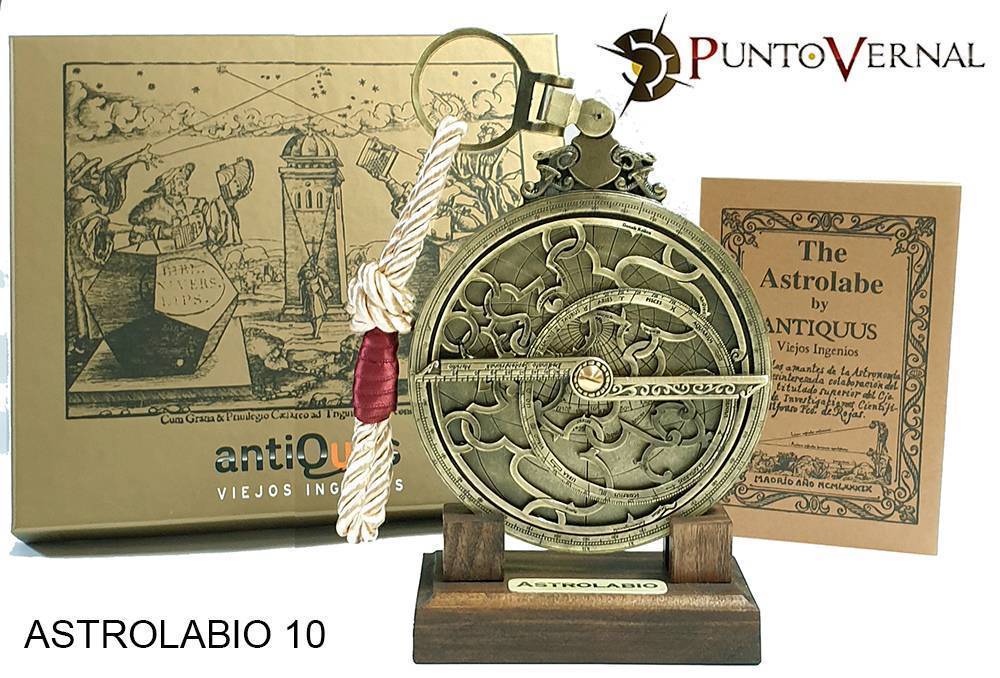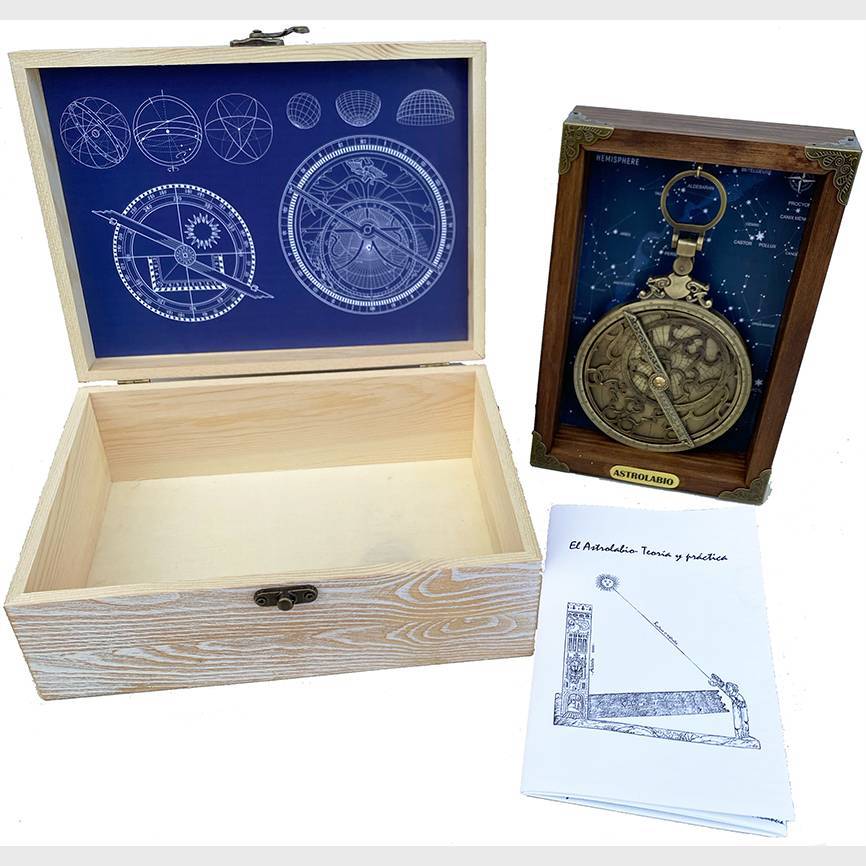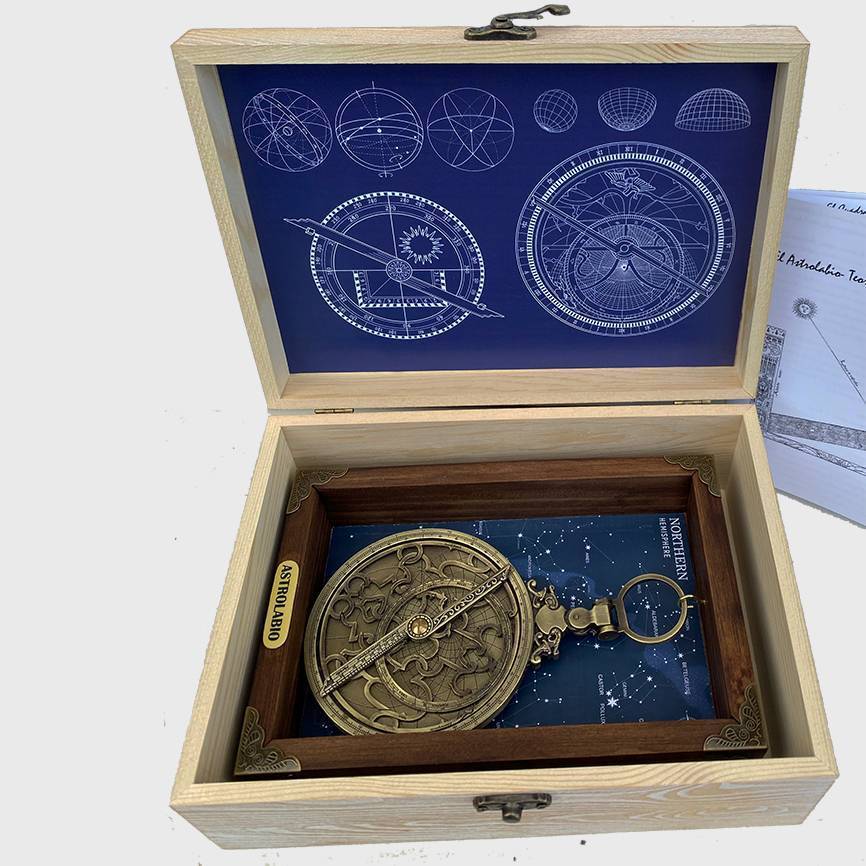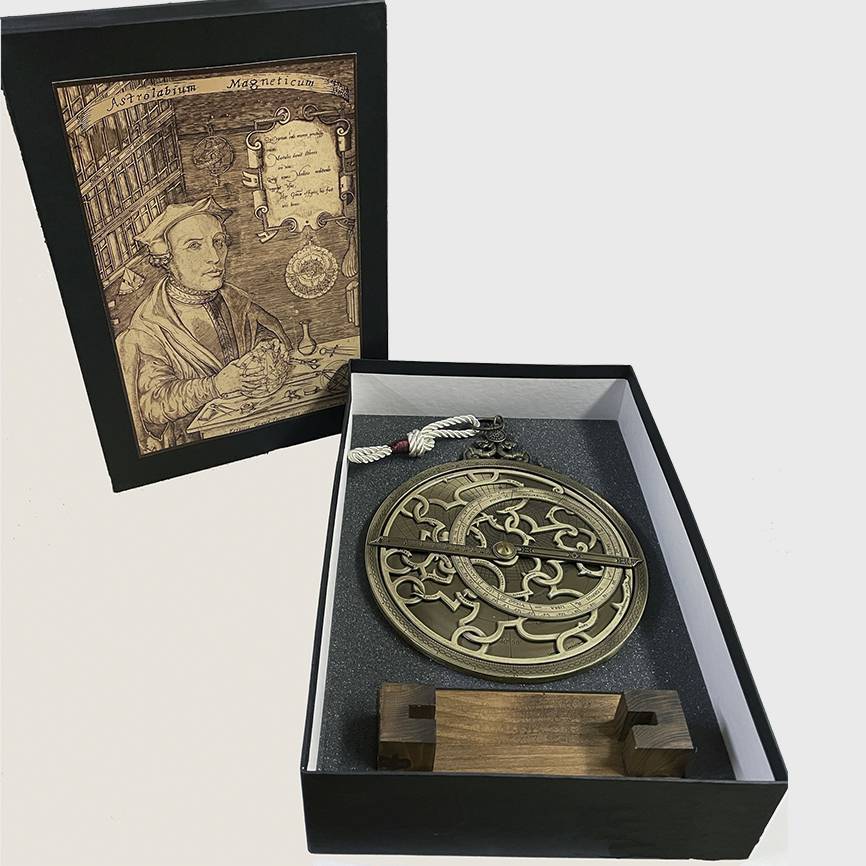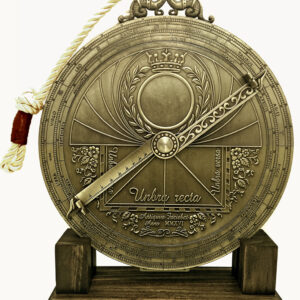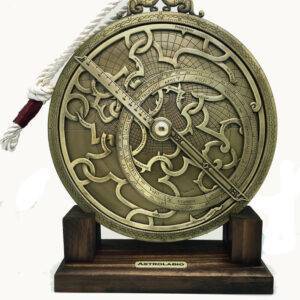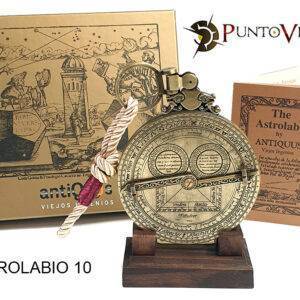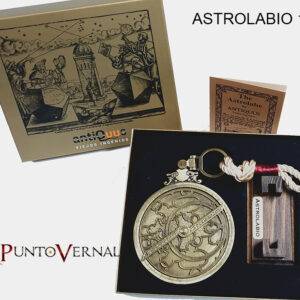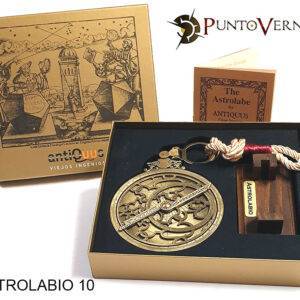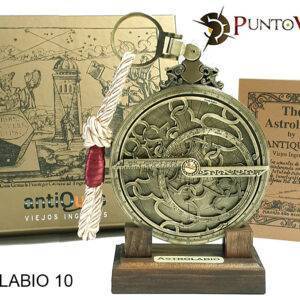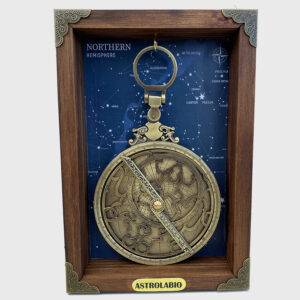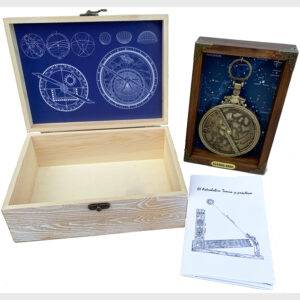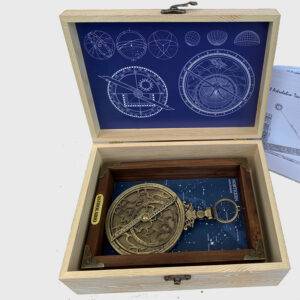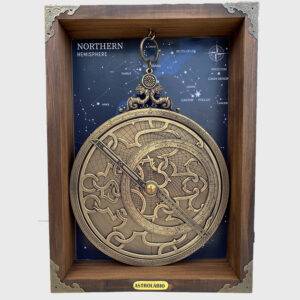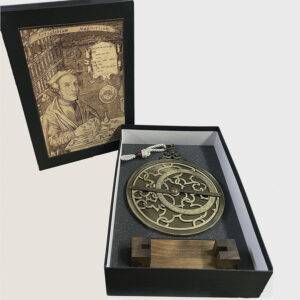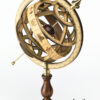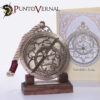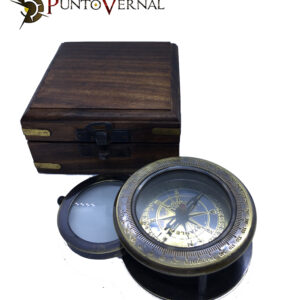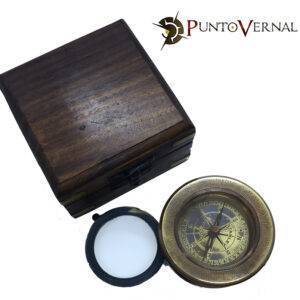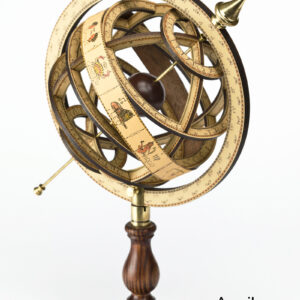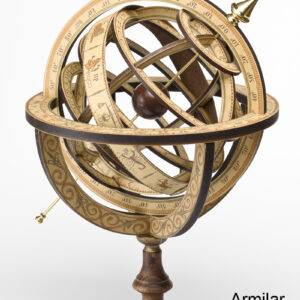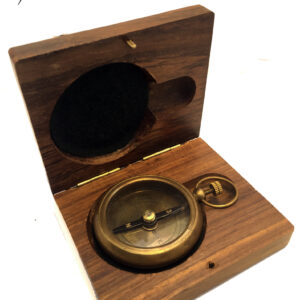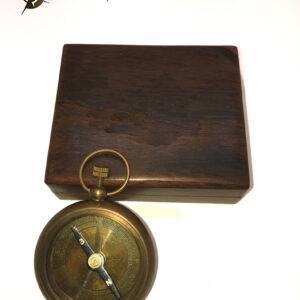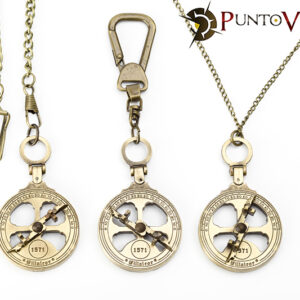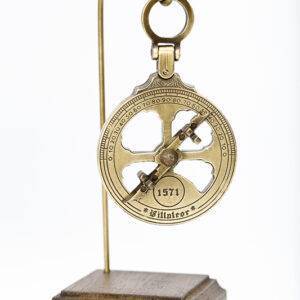PLANISPHERIC ASTROLABE
A planispheric astrolabe is an astronomical instrument used to solve problems related to time in its broadest sense (not the climatological one, obviously) and the position of the sun and stars. Beautiful and beautiful object that has been captivating us for more than 2000 years and causing the curiosity to unravel all its mysteries, which are those of the universe. With it we can obtain answers to numerous astronomical problems that would take us hours and hours to answer through very complex mathematical calculations. It is, so to speak, the first computer that humans invented and is considered the mathematical jewel of astronomy.
HISTORY
History, as a science in charge of studying the past of humanity, testifies that since the first written documents, human beings have had curiosity and concern to know and decipher the mysteries of the universe.
Try as a person who lives fully integrated in a society where technology has flooded our lives, to go somewhere solitary, far from light pollution and on a clear night look at the sky and you will probably ask yourself the same questions that you asked yourself. our ancestors did more than 15,000 years ago:
What is all this I’m seeing? How does it work? Who has done it?.
Well, the instrument or device closest to the answer to at least the first two questions, that human beings have been able to create, is the planispheric astrolabe.
APPLICATIONS
Its name comes from the Greek aster (astro-star) and lambanein, whose meaning is broader: measure, take, hunt, search… therefore, astrolabe is the one who seeks, the one who apprehends, the one who knows the stars. We can use it, therefore, as a search engine or locator for stars in the sky or as a solver of questions such as:
What time is it? What time will it dawn? Where is the sunset going to occur? What latitude are we at? And so on to more than 50 different questions, simply studying the position of the stars. But the astrolabe is not a simple instrument from the past, something historical or just a curiosity. The astrolabe has been and is now being used in many schools to introduce young students to the world of astronomy. With it they learn basic and fundamental concepts in an enjoyable and fun way.
Our astrolabe can be used at various latitudes, from approximately 38º to 52º North latitude.
ATTENTION
With the Astrolabio 10 model we give away the two laminated cardboard plates for the latitudes of 45º and 50º
Model 20 You can choose it with a single engraving (that of the mother) with a very small margin of error, between 38º and 42º (North latitude)
With two (one is always the mother’s) functional between 38º and 47º
With three (the mother and two more) functional between 38º and 52º
It is made of metal plated in old brass.
PRESENTATION
You can purchase it with a wooden base or with a beautiful wooden frame and it is presented in a beautiful box perfect for making or giving yourself a perfect gift. It is accompanied by a small book with the necessary explanations to learn how to use it.
Available in two sizes:
Arsenius Astrolabe 10
Instrument measurements: Height (including the throne) 13.5 cm
Diameter: 10.0cm
Approximate weight: 0.6 kilos.
Thickness or thickness of the piece: 0.8 cm
Arsenius Astrolabe 20
Instrument measurements: Height (including throne) 27 cm
Diameter: 20cm
Thickness or thickness of the piece: 1.2 cm
Approximate weight: 2,800 kilos.
VAT INCLUDED
https://antiquus.es/producto/astrolabio-universal-de-juan-de-rojas/

